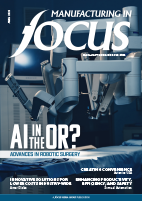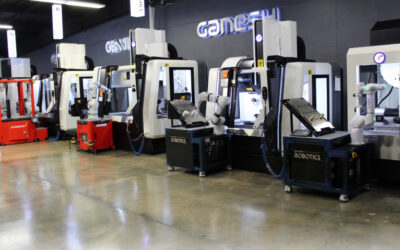The manufacturing industry is no stranger to change, as materials, technologies, safety requirements, and customer demands evolve over time. Lately, the automotive sector in particular has been adapting to the new age of electric over gasoline in our very car-centric culture across North America. However, the demand for innovation in mass transit vehicles remains high on the global scale, and the sector is seeing similar evolution on the manufacturing side.
Modern mass transit vehicles are generally built in the same general process as the rest of the automotive industry: through factory processes creating the chassis and body and adding components to culminate in a final product. But there are some differences that come with scale.
Bus manufacturing companies differ in terms of how much of the bus itself is assembled onsite, whether a given company creates a bus chassis or underframe, the body or coachwork, or assembles all parts together in one. The splitting of the manufacturing process into separate segments allows for companies purchasing buses to make specified decisions on the construction of the vehicle, allowing for emphasis on certain augmentations around the chassis and/or coachwork. Further specialization exists with other types of transit buses, including overnight/sleeper models, school buses, and more.
Aircraft go through similar manufacturing steps as other transit vehicles, but the comparative sophistication of these vehicles requires an even greater degree of detail. Typically, aircraft begin with a design and planning process, using computers as well as drawings and equations to create an optimal plane. The craft is put through digital simulations and tests to ensure all its parts are up to standard. The design and planning stage for an aircraft can take up to four years to complete because of this rigorous testing process, after which it is assembled and put to market.
Rail cars for trains are assembled with attention paid to the design and specification process as well, with a WBS (Work Breakdown Structure) detailing how a rail car will go through each stage of manufacture and assembly. A car’s pieces are manufactured individually using subcontractors and these pieces are eventually assembled into its final shape.
These processes are accomplished at great scale on an annual basis. Buses are manufactured globally at a rate of over 300,000 units every year, while companies like Airbus and Boeing generally produce over 18,000 large jet aircraft annually. On top of this, the production of mass transit is a continually thriving and growing corner of the industry. According to market research published by IbisWorld, “The train, subway and transit car manufacturing industry in Canada has grown over the past five years,” with revenue increasing to $3 billion as of 2022.
Vehicles of all kinds, especially those involved in mass transit, are becoming subject to interesting and dramatic changes as customers and passengers demand different experiences for today’s roads, skies, and rails. Perhaps the biggest of these is the move toward the electrification of vehicles and transportation.
In a piece for Deloitte, various researchers see countries like the United States as “on the cusp of an EV [electric vehicle] expansion,” meaning that transportation leaders need to put focus onto this new trend sooner rather than later. This electrification extends to the manufacturing of these vehicles, as some manufacturers are looking to introduce EV models of vehicles to become carbon-neutral, with companies like General Motors committing to spending as much as $27 billion to reach this ideal. The piece continues in purporting that further changes to the transportation space will be felt at all crossroads: “New federal funding will provide further impetus to experiment with smart infrastructure, connected and autonomous vehicle technologies, and innovative mobility-on-demand solutions.”
Manufacturers and the workers they employ will need to become more familiar with the makeup and parts specific to electric vehicles as well. Deloitte reports that batteries make up nearly 30 percent of the total value of an EV, which requires the hiring and training of skilled battery technicians to create and repair these vehicles. U.S. federal programs like the Talent Pipeline Challenge seek to create workers who can work within this new sector on the horizon.
A report by MarketWatch says that the global bus manufacturing market will continue to grow between now and 2030, with North America serving as the largest market holder. Electrification, as well as the rise of alternative fuels in automotive spaces, will likely play a part in how the sector develops across this decade.
A piece for Bostik labels electric/hybrid buses as a “megatrend” in the industry, meaning that as the market continues to rise along with the call by customers for more fuel-efficient and sustainable travel solutions, electric vehicles will likely become a more attractive option to bus manufacturers (which will hopefully be enough of an offset to the upfront cost). The Bostik piece also notes that new smart technology will likely be on the radar for bus manufacturers, such as digital displays, electronic payment systems, Wi-Fi devices, and more.
In a blog post for VHR, Jonny Kramer notes a few trends that are on the rise in the aircraft manufacturing space and that mirror growth in mass transit overall. Besides a demand for more aircraft and an expected increase of product by about 40 percent—from “25,000 [aircraft] in 2017 to over 35,000 by 2027” for manufacturer Boeing, predicts Kramer—these vehicles will likely see innovation at the manufacturing level to address ongoing issues like capacity. “By seating more people per journey, aircraft manufacturers can design and build the planes that empower airlines to deliver high quality and consistent levels of service without facing extreme financial commitments,” Kramer says.
James Domone, in a piece for SNC Lavalin, references data from the IATA (International Air Transport Association) that aircraft passenger numbers will almost double their current number by 2036, with more than 7 billion people travelling by air yearly. This will lead to a doubling of output by the aircraft industry at large, including in manufacturing, as production of newer and more efficient types of craft will be boosted to new heights, albeit with potential bottlenecks in engine and interior manufacturing.
When it comes to avenues like train transportation, there continue to be movements within some countries like the U.S. and Canada to move toward more energy-efficient and greener rail systems, which are seen as potentially more environmentally sustainable than automobiles. However, the widespread adoption of rail transit (and in turn, the increase in rail manufacturing) won’t be possible until more countries take the plunge toward it, which is still a fraught path in the minds of many, requiring significant investments into creating a functional and attractive rail system in numerous cities, which some policy makers may not feel is worth the money.
Overall, there is a lot to be excited about, as the ways in which planes, trains, and automobiles in mass transit continue to evolve. Although it won’t be without growing pains and challenges, the prospect of greater electrification, capacity increase, and sustainable efforts is more attractive to a modern market than ever before and will likely be an important part of the manufacturing sector in the years to come.













